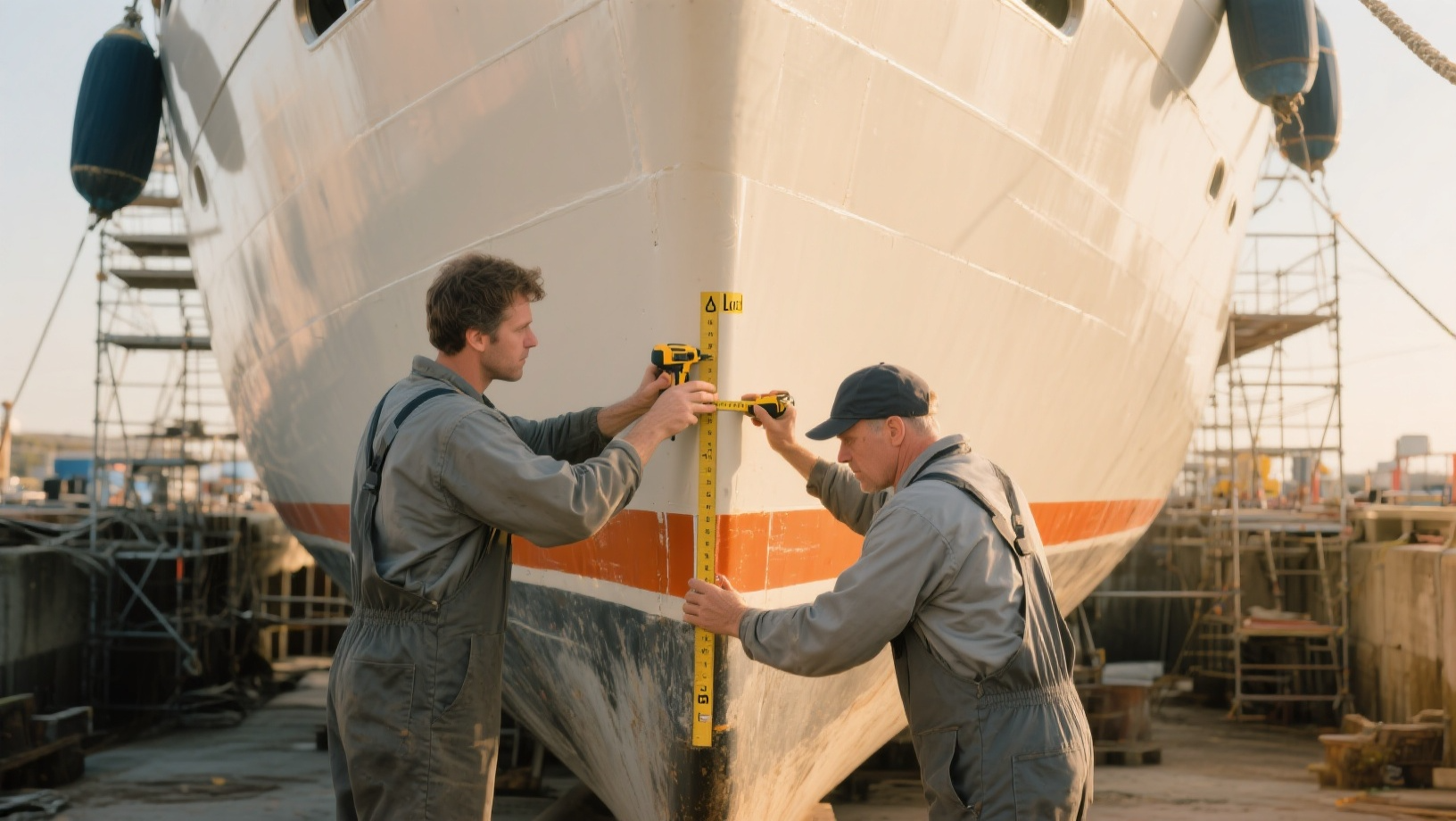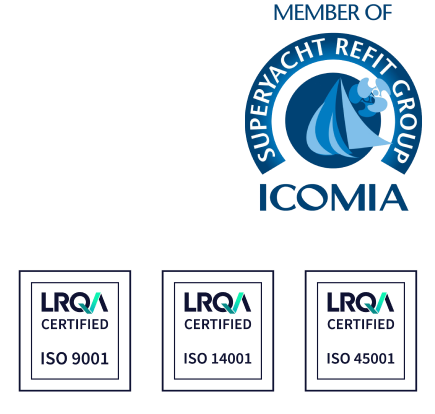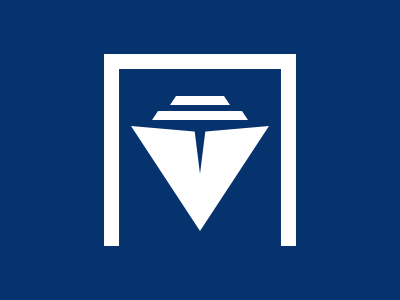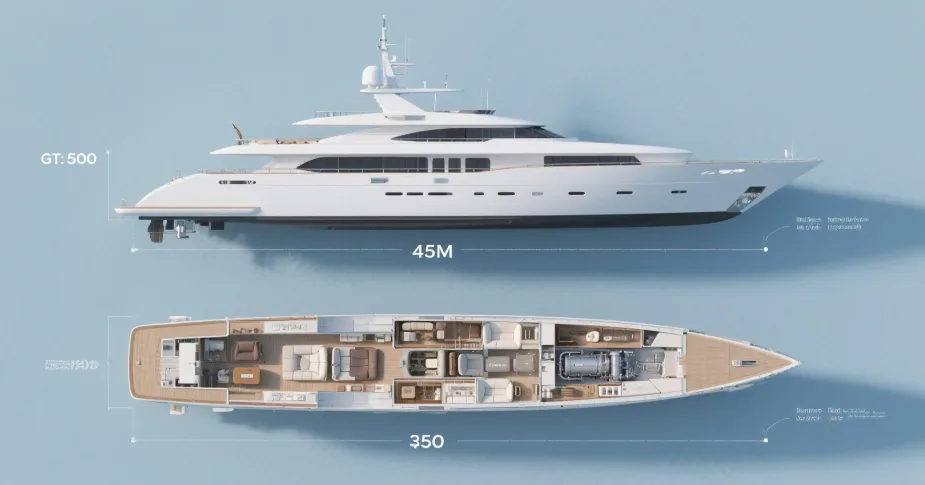If you’ve ever walked along a dock and noticed a series of mysterious lines and letters painted on a ship’s hull, you’ve probably seen a Load Line without even realizing it. While it might look like some cryptic symbol from maritime tradition, it actually plays a crucial role in vessel safety. For those working in the world of yachting, whether you’re on the deck, in the engine room, or behind the scenes in management, understanding the purpose and function of a load line is more than just trivia. It’s part of the language of the sea, and it has very real implications for how a yacht operates.
Why Load Lines Matter
At its core, a load line helps determine how low in the water a vessel can safely sit when fully loaded. Overloading a yacht or ship can reduce stability, increase stress on the hull, and make the vessel more vulnerable in rough seas. A properly assigned load line ensures that a vessel maintains enough freeboard (the distance from the waterline to the deck) to handle waves, weather, and weight safely.
This matters not only for compliance and certification, but also for practical decision-making like how much fuel, water, or cargo to carry on a long voyage. In yachting, it becomes especially relevant during long passages, charters, and refits.

What is a Load Line?
A load line, often referred to as the Plimsoll line, is a physical mark painted on the side of a vessel that shows the maximum depth to which it can be safely submerged under different conditions. The position of the line depends on a variety of factors, including:
-
The vessel’s design and stability characteristics
-
The type of waters it will operate in (tropical, freshwater, saltwater)
-
The season or expected weather conditions
-
Classification society and flag state regulations
The mark itself looks like a circle with a horizontal line through the center, surrounded by letters and smaller lines indicating limits for different conditions. These include:
-
TF (Tropical Fresh Water)
-
F (Fresh Water)
-
T (Tropical Salt Water)
-
S (Summer Salt Water)
-
W (Winter Salt Water)
-
WNA (Winter North Atlantic)
Each of these marks corresponds to how deep the vessel can be loaded in specific environments. For instance, seawater is denser than freshwater, so a yacht can safely sit slightly lower in saltwater than it can in a lake.
Misunderstandings Around Load Lines
It’s easy to confuse a load line with things like draft markings, which show how deep the hull sits in the water at any given moment. While draft marks are useful for reading current displacement, the load line sets the legal and safe maximum, a crucial distinction.
Another misconception is that load lines apply only to commercial ships. In truth, many large yachts (especially those flagged for commercial use or over a certain size) are subject to load line regulations under international conventions such as SOLAS or the Load Line Convention.
Where Load Lines Are Used in Yachting
Load lines are typically required for yachts over 24 meters in load line length that are used for commercial purposes or that make international voyages. Even some private yachts may voluntarily comply, especially if they operate globally or need to satisfy insurance, charter, or classification requirements.
For yacht builders and refit teams, load lines are a critical consideration when modifying hull shape, adding superstructure, or altering the vessel’s weight distribution. During a refit, changing tank configurations or replacing equipment can impact the load line calculation and may trigger a reassessment.
For captains and engineers, understanding the load line helps inform how much weight can safely be added (whether it’s provisioning, fuel, or water) and ensures compliance before setting out on a long passage.

How Load Lines Are Determined
Assigning a load line is not a guess. It involves a combination of:
-
Stability calculations
-
Hydrostatic analysis
-
Regulatory criteria from a classification society or flag authority
-
Physical inspections and approval by surveyors
Once approved, the load line is painted on the hull and recorded in the vessel’s documentation. It must be visible, accurate, and maintained, not just for safety, but also to pass inspections in international ports.
The load line may look like a simple mark, but it tells a story about the balance between buoyancy, safety, and seaworthiness. For yacht professionals, it’s not just a regulatory detail. It’s a tool that helps ensure each voyage is undertaken with full confidence in the vessel’s limits.
FAQs: Load Lines in Yachting
Do all yachts need a load line?
No. Only yachts that exceed certain size and usage thresholds (typically over 24 meters in load line length and operating commercially) are required to have an officially assigned load line. However, even some private yachts may choose to comply voluntarily for international cruising or to meet insurance and classification standards.
Can a load line change after a refit?
Yes. If a refit alters the vessel’s weight, buoyancy, or structure, the assigned load line may need to be recalculated and re-approved. This includes major changes like adding superstructures, modifying tank capacity, or installing heavier systems below the waterline.
What happens if a yacht is loaded below or above its load line?
Loading below the load line is generally safe and often preferred in rough conditions. However, exceeding the load line is a serious safety and legal issue. It reduces freeboard, compromises stability, and can lead to fines, detention in port, or invalidated insurance.
How do tropical and winter marks on the load line differ in practice?
These marks adjust for density and expected weather conditions. In warm, calm waters (tropical), you’re allowed to load a bit deeper. In cold, rough waters (winter), stricter limits apply because rough seas and lower buoyancy demand more freeboard for safety.
Is the load line the same as the draft marks near the bow and stern?
No, although both relate to how the yacht sits in the water. Draft marks show the vessel’s actual depth below the waterline, while the load line defines the maximum legal and safe limit for loading under specific conditions.
Who assigns or certifies a yacht’s load line?
A load line is assigned by a recognized classification society (like Lloyd’s Register, ABS, or RINA) or the yacht’s flag state authority. It involves design review, hydrostatic testing, and physical inspection before being officially recorded and painted on the hull.
Does the load line affect a yacht’s charter license or insurance?
It can. Some commercial flag states and insurers require proof of compliance with load line regulations before issuing or renewing charter certificates. It’s a key factor in demonstrating seaworthiness and legal operating limits.
Can a yacht operate without a visible load line mark?
If the yacht is required to have one and it’s missing, obscured, or altered, it may be detained or restricted from sailing until it’s corrected. The load line must always be clearly visible and in good condition to pass inspections.









